Guggenheim Museum Bilbao Shows Key Works from the Rupf Collection
- BILBAO, Spain
- /
- February 19, 2017
The Guggenheim Museum Bilbao is presenting The Collection of Hermann and Margrit Rupf through April 23, 2017. This exhibition brings together 70 works by key artists in the history of art during the first half of the 20th century, including Pablo Picasso, Georges Braque, Juan Gris, Fernand Léger, Paul Klee, and Vasily Kandinsky, in dialogue with works by contemporary artists dating from the second half of the 20th century until today.
Hardly any time went by between the creation of works by artists like Picasso, Braque, and Derain and their acquisition by Hermann Rupf, who was personally involved with these artists at the beginning of their careers.
The Rupfs were close friends with artists like Vasily Kandinsky and Paul Klee, who gave Hermann and Margrit Rupf dedicated works on important occasions like birthdays and Christmas.
The Rupfs were the first private Swiss collectors to occupy themselves with abstract art. In 1954, they decided to give their holdings—around 250 artworks and numerous art books—to the Kunstmuseum Bern via a foundation. Without losing sight of the impressive core collection of artworks assembled by the Rupfs, the Foundation continues to expand the collection today with more recent works of contemporary art.
After the founders’ deaths in the early 1960’s, the Hermann and Magrit Rupf Collection belonging to the Hermann and Margrit Rupf Foundation, made up of 41 paintings, 14 sculptures, 23 drawings, 149 prints, and 32 books containing original engravings was deposited at the Kunstmuseum Bern. The Rupfs also left the rest of their assets to the Foundation as well, thus guaranteeing that it could continue to acquire new artworks in the future.
In 1963, one year after the death of Hermann Rupf, the Foundation managed to purchase Henri Laurens’s 1918 work Fruit Bowl and Pipe (Compotier et pipe) to complete its already extensive group of sculptures and works on paper by this artist. In 1964, a relief by Hans Arp was purchased. In the 1990’s, the existing collection was expanded with works by American artists as Donald Judd, Joseph Kosuth, Brice Marden, Ad Reinhard, and James Turrell, and European artists as Piero Manzoni, Enrico Castellani, Lucio Fontana, and Christian Megert, among others.
A group of works representing Minimalism and the ZERO Movement was also acquired, which today remains a fascinating continuation of the Rupfs’ original collection, since in the early days of their collecting we can see an undeniable preference for the tradition of constructivist and conceptual art. The creation of the Rupf Foundation guaranteed that the collection would be conserved, consolidated and expanded.
The Foundation still focuses on the most recent contemporary art without losing sight of the core of the collection, comprised of the wonderful works of art gathered by Rupf. This exhibition reveals the coherence and evolution of the Collection of Hermann and Margrit Rupf as a reflection of the art of their day. This is the first time that this collection has travelled to Spain, with an extensive selection of works rendered between 1907 and 2016.

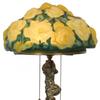

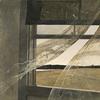



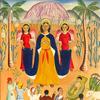
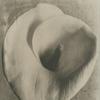
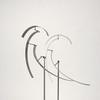




![Offering a Truce [Bested], 1895, is estimated to sell for between $1,300,000 and $1,800,000 on March 22, 2014, for The Russell: An Exhibition and Sale to Benefit the C.M. Russell Museum. Offering a Truce [Bested], 1895, is estimated to sell for between $1,300,000 and $1,800,000 on March 22, 2014, for The Russell: An Exhibition and Sale to Benefit the C.M. Russell Museum.](/images/c/a8/20/Dec10_Offering_a_Truce__Bested_300dpi100x100_c.jpg)